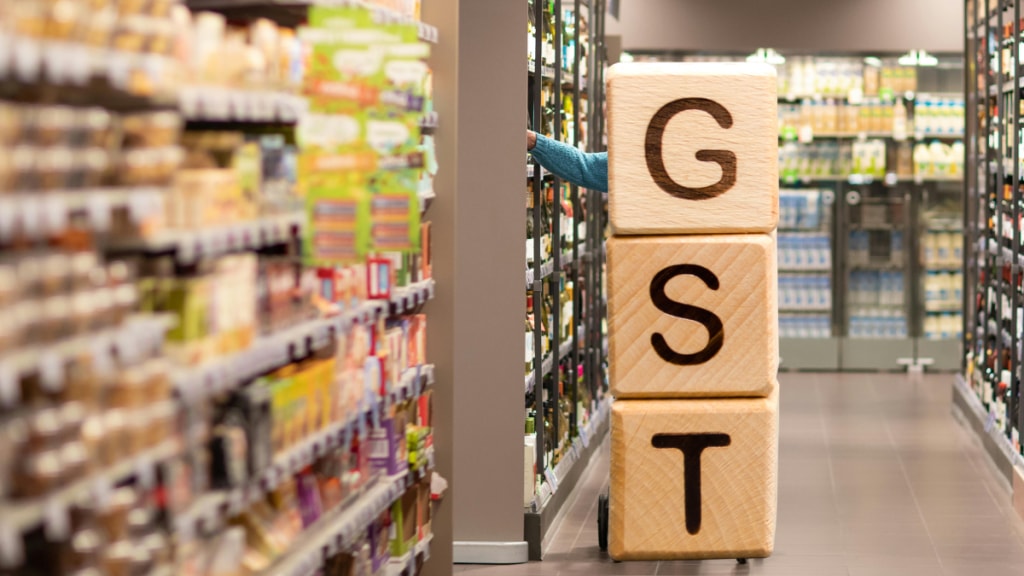The 56th GST Council meeting is set to begin tomorrow- September 3 with a major proposal on the table to restructure GST tax slabs ans create a 2-rate structure. Most products in the 12 per cent slab are likely to be moved to the lower 5 per cent rate, while those in the 28 per cent slab may shift to 18 per cent.
If approved, the final details will be announced on September 4.
Bank of Baroda (BoB) expects the changes to give a strong push to consumer spending, with fast-moving consumer goods (FMCG) emerging as the biggest beneficiary. Analysts at Anand Rathi also noted that rural and semi-urban markets, where consumption has been under pressure, will likely see the sharpest demand revival.
Mass products to see bigger relief: Anand Rathi
According to Anand Rathi, tax cuts on daily-use items will directly benefit mass-market categories, while premium products may see limited gains. “Rural demand is set to get a fresh push as lower taxes bring down product prices,” the brokerage added.
FMCG items may get major tax relief: BoB
Food products such as milk, cheese, oils, sugar, confectionery, and processed foods will now attract 5 per cent GST instead of 12 per cent. BoB estimates that around 11.4 per cent of private final consumption expenditure will benefit directly, with FMCG accounting for a large share.
“The migration of major essential items of consumption, especially food items, from the 12% to 5% bracket will provide a major breather for middle-class consumers,” BoB said.
Margins to improve with clarity on input tax: Anand Rathi
Anand Rathi also highlighted that clearer rules on input tax credit (ITC) and faster refunds are expected to ease working capital pressures. This will help FMCG companies protect their margins at a time of rising costs. Analysts said the step will allow firms to reinvest savings into expanding distribution and launching new products.
HUL, Emami and Marico to benefit: Anand Rathi
Rural growth has already been outpacing urban consumption, and tax cuts (if passed) are expected to strengthen this trend further. Anand Rathi noted that large players with deep rural reach such as Hindustan Unilever, Dabur, Emami, and Marico are likely to benefit the most.
FMCG earnings momentum likely to continue: Anand Rathi
Anand Rathi noted that shares of FMCG companies have shown strength in recent months and it expects that earnings momentum will continue in the coming quarters because of lower GST rates (If approved) combined with improved rural demand. However, they cautioned that inflation in raw material costs and stiff competition could partly offset the gains.
Households may get relief, GST cuts may boost consumption and GDP: BoB
With essentials becoming cheaper, after GST reform gets approved, households are expected to save more and spend more on other items. BoB projects a net consumption gain of Rs 0.7–1 lakh crore, translating into 0.2–0.3 per cent of GDP growth in the second half of FY26. The bank also noted that lower indirect tax rates will ease inflationary pressures. About 8.5 per cent of the CPI basket is likely to see a direct reduction in tax rates, helping bring down both consumer and producer prices.
Durables and vehicles may get a boost:BoB
While FMCG will lead the gains, consumer durables such as televisions, air conditioners, dishwashers, and vehicles will also benefit as GST rates drop from 28 per cent to 18 per cent. This is expected to boost demand in a sector that has been under pressure.
Inflation likely to ease: BoB
The reforms are expected to lower overall inflation. BoB said that at least 8.5 per cent of the CPI basket will be impacted by the rate cuts. Prices of key inputs such as cement, tyres, and vehicle parts are also expected to fall, easing costs for producers.

